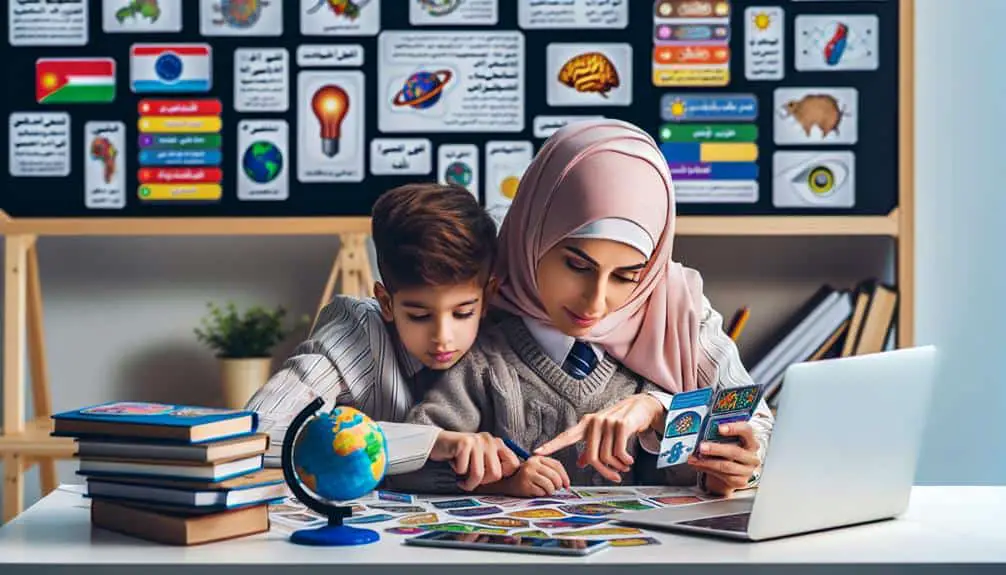In homeschooling, experiential learning is essential. It helps you grasp concepts deeply by doing hands-on activities and applying them to real life situations. This approach boosts problem-solving, critical thinking, and creativity skills. It also makes you more self-reliant and motivated. Plus, by tailoring education to your needs, you get a personalized curriculum that suits your learning style. This method sharpens your critical thinking abilities by engaging you in thought-provoking challenges that enhance your decision-making strategies. Experiential learning in homeschooling bridges the gap between theory and real-world practice, offering practical skills and immersive experiences.
Key Points
- Enhances comprehension and skills through hands-on experiences.
- Tailors education to individual needs for personalized learning.
- Fosters critical thinking skills through engaging activities.
- Connects theoretical concepts to real-world applications.
- Promotes independence, creativity, and problem-solving in a dynamic learning environment.
Benefits of Experiential Learning
Experiential learning offers homeschooling students the opportunity to actively engage with the material, fostering a deeper understanding of concepts through hands-on experiences. Engaging exploration allows you to delve into subjects in a way that textbooks alone can't provide. By immersing yourself in practical activities, you can grasp complex ideas more effectively. For instance, conducting science experiments at home enables you to see scientific principles in action, making them more tangible and easier to remember.
Practical immersion not only enhances your comprehension but also nurtures essential skills like problem-solving, critical thinking, and creativity. When you engage in hands-on projects, you learn how to apply theoretical knowledge to real-world situations, preparing you for future challenges. Additionally, by actively participating in your education, you take ownership of your learning journey, fostering independence and self-motivation.
Embrace the benefits of experiential learning in your homeschooling curriculum to access a world of knowledge through interactive and enriching experiences.
Implementing Hands-On Activities
To effectively incorporate hands-on activities into your homeschooling curriculum, consider integrating practical projects that complement your learning objectives and enhance your understanding of various subjects. By focusing on practical application and interactive engagement, you can create a dynamic learning environment that promotes skill development and provides tangible experiences for your child. Incorporating hands-on activities allows learners to actively participate in the learning process, leading to a deeper understanding of concepts and fostering a sense of curiosity and creativity.
When implementing hands-on activities, make sure they align with the specific goals of your curriculum. Choose projects that not only reinforce academic concepts but also encourage critical thinking, problem-solving, and collaboration. Whether it's conducting science experiments, building models, or creating art projects, hands-on activities offer a multi-sensory approach to learning that caters to different learning styles.
Tailoring Education to Individual Needs
When tailoring education to individual needs in homeschooling, it's essential to understand the unique learning styles and preferences of each child. Personalized learning is key to ensuring that every student reaches their full potential.
Here are some ways you can tailor education to suit individual needs:
- Flexible Schedules: Allow for personalized learning by adjusting the pace and timing of lessons to match your child's learning style and preferences.
- Varied Teaching Methods: Incorporate a mix of visual, auditory, and kinesthetic activities to cater to different learning styles and enhance skill development.
- Individualized Curriculum: Create a curriculum that aligns with your child's interests, strengths, and areas needing improvement, fostering a more engaging and effective learning experience.
Enhancing Critical Thinking Skills
Enhancing critical thinking skills involves engaging students in thought-provoking activities that challenge their reasoning and problem-solving abilities. By incorporating problem-solving tasks into your homeschooling curriculum, you provide opportunities for your child to analyze information, evaluate different perspectives, and develop effective strategies for decision making.
Encourage your child to think critically by presenting them with real-life scenarios where they must identify issues, gather relevant information, and propose solutions. Engaging in debates, conducting experiments, and solving puzzles are effective ways to enhance their critical thinking skills.
As you guide your child through these activities, remember to ask open-ended questions that prompt them to explain their thought process and justify their conclusions. This approach encourages independent thinking and fosters a deeper understanding of complex concepts.
Fostering Real-World Application
Fostering real-world application in homeschooling involves connecting theoretical concepts to practical experiences, allowing your child to see the relevance of their learning in everyday situations. By immersing your child in real-world scenarios, you can help them develop practical skills that will serve them well beyond the confines of traditional education.
Here are some ways you can foster real-world application in your homeschooling journey:
- Hands-On Projects: Encourage your child to engage in hands-on projects that require them to apply their knowledge in practical ways.
- Field Trips: Take advantage of field trips to museums, nature reserves, or local businesses to provide immersive experiences that reinforce classroom learning.
- Role-Playing Exercises: Engage your child in role-playing exercises where they can simulate real-life situations, allowing them to practice problem-solving and decision-making skills in a safe environment.




